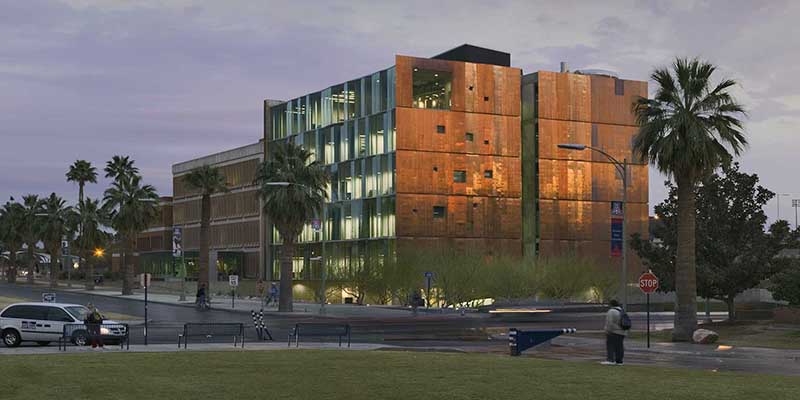
Description
This building received a 2007 American Institute of Architects (AIA) National Honor Award for Architecture, the profession's highest recognition of works that exemplify excellence in architecture, interior design and urban planning. It was one of only 11 buildings worldwide and the only Tucson building to ever receive an honor award in the award's 59-year history. The goal of the project was to create a building commensurate with the international reputation of the College of Optical Sciences and enable the College to retain its status as one of the world's premier optical instructional and research programs. The new expansion includes meeting space, faculty offices and research labs.
The facility's design features incorporate optical science materials and methods. One example of this is the building organization which emphasizes the contrast of "blind" and "seeing" spaces. "Blind" Space - Light sensitive research functions are organized along the southern, windowless side of the building. The cast-in-place concrete building is sheathed in copper panels, recalling the color of the campus brick in an interpretive way. The skin is designed as a breathable "rain screen", which protects the inner membrane from the harsh desert sun.
"Seeing" Space - Office and support space open to natural light and views of the campus mall and mountains to the north. The glass wall is folded as an interpretation of a Fresnel lens. The simultaneous use of reflection and transparency recall the rhythm and texture of the existing building's pre-cast facade. The interior public space was conceived as an abstraction of another optical device: the Camera Obscura. Daylight is introduced by three vertical light shafts, and allowed to interact and modulate the spaces within. Each shaft features specific optical effect, allowing natural daylight to actively integrate into daily activities within the building.
Projected Ultimate Budget
Construction Project Manager
Lloyd Construction Co Inc
Richard & Bauer Architecture


Please try viewing in landscape mode.
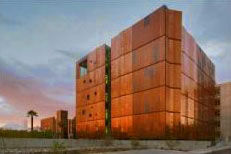
Light sensitive research functions are organized along the southern, windowless side of the building. The building's unique copper sheathing is designed as a breathable shield for the inner wall, shading the envelope of the building from the harsh desert sun and moving heat by convection away from the building core.
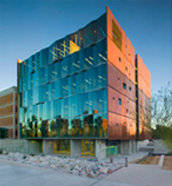
The glass curtain wall, and programmatic spaces for which views and daylight are desired, face north toward the Catalina Mountains. A limited number of punched windows are used on the east and west facades to minimize the solar exposure, heat gain and glare.
The use of daylight is central to the design concept for the building and is introduced from several sources. The glass curtain wall provides views and indirect natural light to offices and a conference center located along the north elevation of the building. Internal clerestory windows allow light to extend further into the central corridor at each floor. Internal light shafts provide a dramatic source of daylight for the internal spaces of the building.
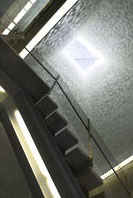
Relief air from the high performance HVAC system is utilized to temper the exterior plaza space. This cooled air, which is typically exhausted where convenient, is conveyed via an underground duct to the outside amphitheater. The sunken plaza creates a depression which helps contain the cooler air.
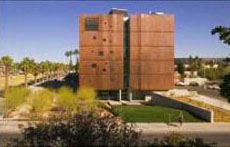
The plaza's design maximizes the use of permeable surfaces. Rip rap was used around the planted terraces and decomposed granite at the tree grove and around pathways. This promotes the absorption of surface water and minimizes the impact of runoff water from the site.
The landscaping concept for the building utilizes low water use and regional plants and trees, such as the Desert Museum Palo Verde.